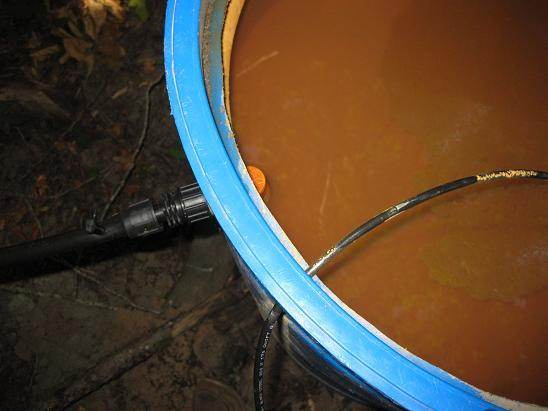




find religion! church
kiva! hyvä! iloinen! pikkumaatila
get stung! beehives
be hospitable! host-a-hive
be antisocial! facespace








"the qualities of these bacteria, like the heat of the sun, electricity, or the qualities of metals, are part of the storehouse of knowledge of all men. They are manifestations of the laws of nature, free to all men and reserved exclusively to none." SCOTUS, Funk Bros. Seed Co. v. Kale Inoculant Co.









Joel Hollingsworth wrote:
I'ts a good thing you hate soft water, because I think the cheapest way to remove iron and manganese would be by lowering the pH with some sort of calcium before it exits the sand filter.
Al Loria wrote:
Here is a possible solution to the iron in your water. Might be costly, but no maintenance afterward.
find religion! church
kiva! hyvä! iloinen! pikkumaatila
get stung! beehives
be hospitable! host-a-hive
be antisocial! facespace













rockguy wrote:
A float valve can work to turn water on/off electrically too. Mount the float in the water, add a rod to the stem near the pivot point with the other end of the rod operating a micro switch.
find religion! church
kiva! hyvä! iloinen! pikkumaatila
get stung! beehives
be hospitable! host-a-hive
be antisocial! facespace




tel jetson wrote:
looked like all the treatment methods mentioned on that page do require maintenance. I suppose the back flushing would be automated, but the polyphosphate and chlorination and greensand options all consume some substance that must be replaced.





Al Loria wrote:
I was thinking of the well being shallower or deeper as shown in figure 1. The well would be above or below the heavy iron zone at that point, eliminating maintenance. The other solutions do require maintenance.
find religion! church
kiva! hyvä! iloinen! pikkumaatila
get stung! beehives
be hospitable! host-a-hive
be antisocial! facespace









find religion! church
kiva! hyvä! iloinen! pikkumaatila
get stung! beehives
be hospitable! host-a-hive
be antisocial! facespace









erikgreen wrote:
I wonder if the pipes used for the well walls are rusting out, and that is the cause of the iron.
find religion! church
kiva! hyvä! iloinen! pikkumaatila
get stung! beehives
be hospitable! host-a-hive
be antisocial! facespace








find religion! church
kiva! hyvä! iloinen! pikkumaatila
get stung! beehives
be hospitable! host-a-hive
be antisocial! facespace













sticky_burr wrote:
how about ozonator this is what i am plan for rain water collection/storage. it wont remove it but it will oxidize it and can be filtered out easier or will settle out. and in my case it kills viruses bacteria protozoa and cysts and doesnt salt the water(drinking salt water is still bad right?)
find religion! church
kiva! hyvä! iloinen! pikkumaatila
get stung! beehives
be hospitable! host-a-hive
be antisocial! facespace








"the qualities of these bacteria, like the heat of the sun, electricity, or the qualities of metals, are part of the storehouse of knowledge of all men. They are manifestations of the laws of nature, free to all men and reserved exclusively to none." SCOTUS, Funk Bros. Seed Co. v. Kale Inoculant Co.





|
Toto, I have a feeling we're not in Kansas anymore. Check the tiny ad.
Homestead Pigs Course
https://permies.com/wiki/365748/Homestead-Pigs
|




